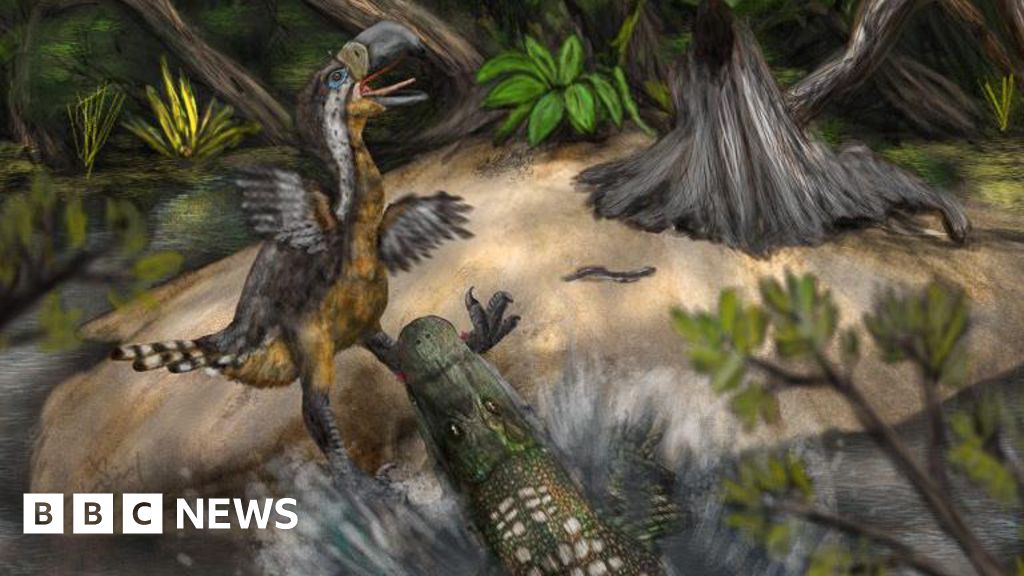Science correspondent, BBC News
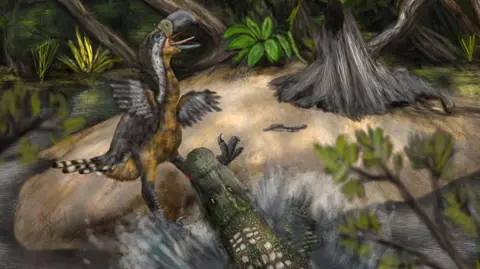 Link et al/Biology Letters
Link et al/Biology LettersTeeth marks made on the leg bone of a large avian reptile known as a terror bird 13 million years ago suggest an even bigger predator may have killed it, scientists say.
Terror birds were top predators – they could be taller than a human and had powerful legs and hooked, flesh-ripping beaks.
Palaeontologists in Colombia matched teeth marks on the fossilised leg bone of one of these fearsome birds to a caiman, or a crocodile-like reptile.
3D digital scans of the bites allowed the scientists to reconstruct what they believe was a “battle to the death” that the terror bird did not survive.
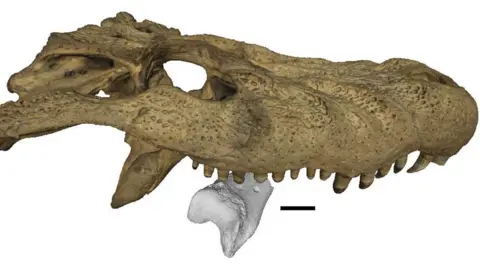 Link et al/Biology Letters
Link et al/Biology LettersThe new study, published in the journal Biology Letters, compared the size and shape of the teeth marks to the skulls and teeth of crocodile-like predators in museum collections.
It provides rare evidence, the researchers say, of an interaction between two extinct top predators at the time.
The leg bone the scientists studied was first unearthed more than 15 years ago in Colombia’s Tatacoa Desert.
When the bird lived in the swamps of that area 13 million years ago, it would have been about 2.5m tall and would have used its legs and beak to hold down and rip at its prey.
What the scientists are not able to prove conclusively is whether this particular, unfortunate terror bird was killed in the attack, or if the caiman scavenged its remains.
“There is no sign of healing in the bite marks on the bone,” explained lead researcher Andres Link from the Universidad de Los Andes in Bogotá, Colombia.
“So if it wasn’t already dead, it died in the attack. That was the last day that bird was on this planet – then a piece of its leg bone was found 13 million years later.”
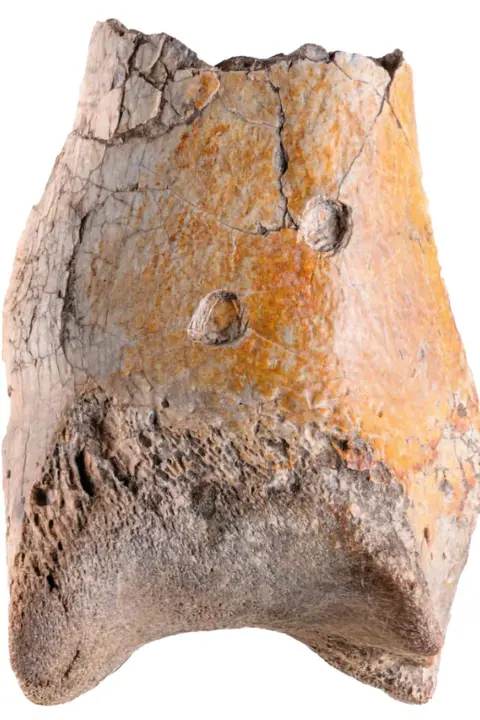 Andres Link
Andres LinkThe Tatacoa Desert is home to rich deposits of fossils from an epoch known as the Middle Miocene.
At that time, it was a humid swamp, where river sediments trapped and fossilised the bones of dead animals, resulting in the preserved remains found there today.
This particular bone was first discovered about 15 years ago by local fossil collector César Augusto Perdomo.
The Colombian scientists worked closely with Mr Perdomo, studying and cataloging fossils that he has gathered in his museum. It was when scientists were working in the museum that they realised that this fist-sized piece of leg bone came from a terror bird.
That was an exciting discovery – terror bird fossils are rare. But Dr Link and his colleagues were also fascinated by the puncture marks in the bone, which had clearly been made by the teeth of another powerful predator.
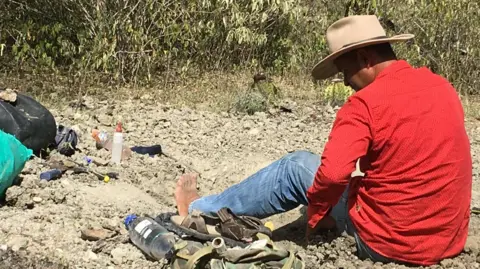 Andres Link
Andres LinkThis new analysis of the marks revealed that they most closely match an extinct caiman species called Purussaurus neivensis, a crocodilian that would have been up to five metres long.
The researchers say it would have ambushed its prey from the water’s edge, much like crocodiles and caimans do today.
“I would imagine it was waiting for prey to to be nearby,” said Dr Link.
If this was indeed a battle between two apex predators, Dr Link says that provides insight into an ancient ecosystem. It reveals that ferocious terror birds were much more vulnerable to predators than previously thought.
“Every piece of a body helps us to understand so much about life on the planet in the past,” Dr Link told BBC News.
“That’s something that amazes me – how one tiny bone can complete the story.”


